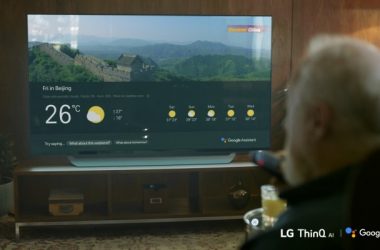
Google released its Chrome operating system last week to a great deal of hoopla and debate — depending on your point of view, it was either the Next Big Thing or Much Ado About Nothing.
In actuality, there simply isn’t much there — yet. Chrome OS is a somewhat rough work in progress, with a small handful of operating system features wrapped around the Chrome browser.
I was able to put my hands on a copy of the new OS, and a few hours with it revealed a stripped-down operating system that at this point is little more than a Web browser, with few system-wide controls for tasks such as printing, customization, and managing user accounts. In fact, the current version of Chrome OS is so tied to Web-browsing that you need a Google account to even log into it and use it.
Because it is in the very earliest stages of its design, it is not at all clear how much remains to be added to Chrome, and how much Chrome will remain in essence a browser doing double-duty as an operating system. Google has said that Chrome will run no applications on its own — in fact, it won’t even use a hard disk — so there may well not be much more than you see at this point.
A quick first look
I tested the Chrome OS running in a virtual machine under VirtualBox virtualization software, using an image created by gdgt. I ran it on a MacBook Air and dedicated 1 GB of memory to the virtual machine; I found that running it with any less memory made performance slow and inconsistent.
When you launch Chrome, you’ll see a screen asking you to log in with your Google account. (Note that because the Chrome virtual image I used was created by a third party rather than by Google itself, for security reasons I created a Google account solely for testing purposes, in case some security hole was slipped into the build.)
Once you log in, you’ll come to the familiar Google home page. The operating system itself looks nearly identical to the Chrome browser, with a few minor additions.
There is a mysterious Chrome icon in the upper left-hand portion of the screen that doesn’t at this point serve any useful purpose. Click it and you’ll open a blank tab. Most likely this will be used for various operating system features such as turning off the computer, and probably others as well.
Over on the upper-right hand portion of the top of the screen you’ll find several operating system controls, available via icons. The first is a time display. Next to it are three icons: One that displays battery life; a networking icon that controls WiFi and Ethernet connectivity; and a final icon whose options are nearly identical to the ones you get when you click the Chrome browser’s tools icon.
Click the time display icon, and you’re brought to a display tab labeled Chromium OS (more explanation later). It shows you the date, and gives you the option to change your time zone (though there’s no option at this point to change the date itself). Also on this tab are options to control the sensitivity of the touchpad, including an option to enable tapping to be used as clicking.
The networking icon is designed to let you turn Wi-Fi and Ethernet connectivity on and off. Because I was running a VirtualBox virtual machine, turning Wi-Fi on and off had no effect, even though I was connected to a network via Wi-Fi. However, turning Ethernet off disconnected me from my network, and turning it back on again reconnected me.
The final icon is a bit baffling, because when you click it, you get nearly the same menu as when you click the wrench icon in the Chrome browser. The final Chrome OS icon offers more choices than the browser icon, including selections for clearing browser data, importing bookmarks and settings, and an odd item called Compact nav bar that actually controls how new tabs are opened, including the odd selection "Open tabs clobber." (I couldn’t figure out what that did. I expected it to close any open tabs — in other words, "clobber" them. But choosing it did nothing that I could detect.)
The menu that appears when you click the wrench icon in the Chrome OS browser includes an item for synching bookmarks, although it’s grayed out and doesn’t appear to work yet. The menu also includes an Extensions choice, although extensions aren’t yet available.
Google’s upcoming operating system has caused a lot of talk, but there’s not much there yet.





